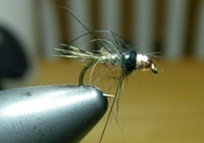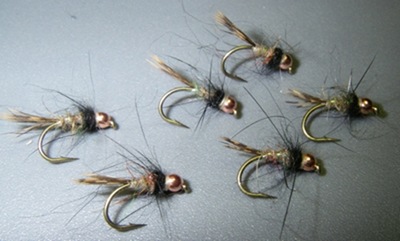 I am whipping together some flies for tomorrow’s Brownline Tarpon session, still giddy from today’s success. I left four flies in bull rushes or fish and realized I was getting low on the physical properties needed.
I am whipping together some flies for tomorrow’s Brownline Tarpon session, still giddy from today’s success. I left four flies in bull rushes or fish and realized I was getting low on the physical properties needed.
Huh? Just tie more of what worked and be done with it, right?
If I had been fishing a hatch of specific insects that’s precisely what I would do, but instead of fish feeding selectively – they were feeding period.
A cigarette butt that sank fast enough would’ve worked just as well. I would love to say that a #4 Olive Wooly Bugger is the pre-nuptial form of the Giganticus Ephemerella Sativa, but it’s not – and I’m no genius for getting a hungry fish to eat either.
I scared you from tying with the road-kill piece, now let me explain why tying pays off:
- I need a fly that sinks fast, but not too fast as the maximum depth is about 5 feet.
- I need it to look like food
- I need to oversize the hook relative to the fly size, so that I get a solid chunk of fish mouth, and a heavier wire hook. A 10lb fish on a trout hook is asking for trouble, these fish go up to 15-17lbs.
You’ll be able to find something suitable at the store, but nothing beats the ability to customize flies for a specific situation. Of the above, the oversized hook is the most important, it will pay for itself every time you turn the fish and see that little tiny hook in that really big mouth. The only time you’ll pray more fervently is the Dentist’s Office – just as soon as the high pitched whine of his drill filters into the reception area…
The pictures depict what I tied; neutral/dark buggy looking critter with a flashabou rib and a copper bead.

A slender profile assists the sink rate, as does the oversized hook and copper bead. A light flashabou rib (3 turns) gives a little sparkle. Guard hairs from the black rabbit offer a hint of movement, but most important is the wider gape and stronger steel offered by the #12 hook. The fly body is tied to be a #14 fly.
Tailoring the flies sink rate allows me to use the cast to determine what depth the fly reaches when it passes near the target fish. Casting close to the target yields shallow, casting further away allows the fly to get much deeper.
I don’t think the fly pattern matters at all, but the fish has the final say, and unlike the magazines they’re always right.
Technorati Tags: fly tying physics, carp on the fly, brownlining
